Did you know that nearly 80% of motorcyclists involved in accidents experience injuries that could have been prevented with the right motorcycle gear essentials? That’s a staggering figure—one that highlights just how critical your riding gear is for safe riding. Whether you’re a weekend cruiser, daily commuter, or adventure tourer, what you wear is your best defense on the road. In this comprehensive guide, you’ll unlock everything you need to achieve maximum protection, ultimate comfort, and unbeatable style with motorcycle gear essentials you can’t ride without.
Understanding Motorcycle Gear Essentials: Why Proper Equipment Saves Lives
-
Did you know that nearly 80% of motorcyclists involved in accidents experience injuries that could have been prevented with the right motorcycle gear essentials? Here’s what makes protective gear non-negotiable.
The world of motorcycle riding is exhilarating, but it is not without risks. Protective gear forms the physical barrier between you and the harsh reality of road surfaces, high speeds, and unpredictable elements. Unfortunately, many riders underestimate the necessity of having high-quality motorcycle gear essentials, only realizing its importance after a close call or a motorcycle accident. Equipped with helmets, jackets, riding jeans, gloves, and boots, a motorcyclist drastically reduces the severity of injuries—sometimes even walking away unharmed from what could have been a life-threatening crash.
Being proactive about assembling your riding gear is more than a style choice; it’s a concrete safety strategy. For example, a certified motorcycle helmet alone can cut head injury risk by over 69%, while armored jackets shield against road rash, and CE-rated pants and boots prevent debilitating fractures. Functional features, like impact protection inserts, weather resistance, and abrasion-resistant outer layers, turn your motorcycle gear from simple clothing into potentially life-saving equipment—making safe riding absolutely achievable for everyone.
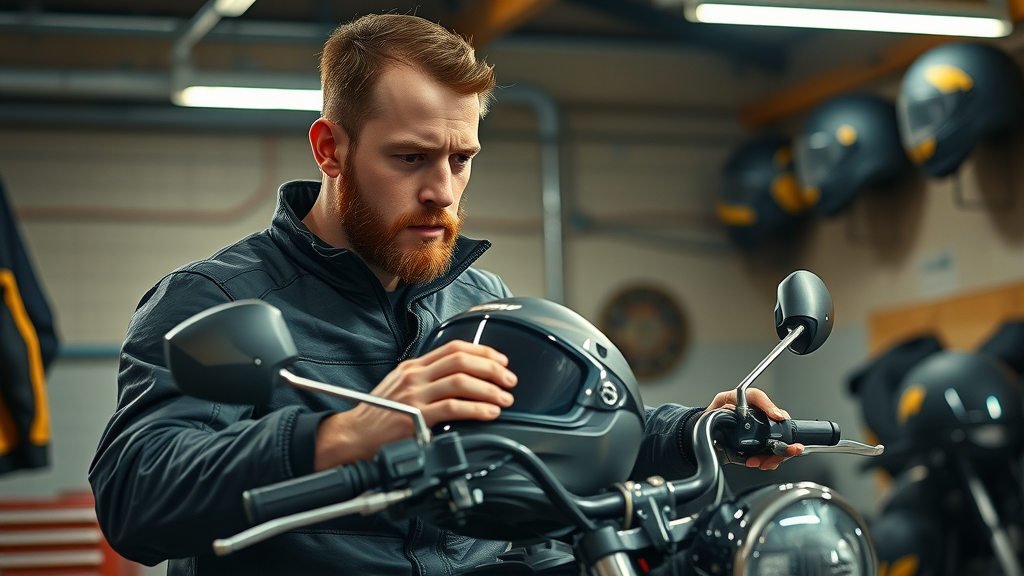
Motorcycle Gear Essentials at a Glance: Your Comprehensive Guide
-
Explore the critical motorcycle gear essentials for every ride, their importance, and how they protect you from head to toe with an at-a-glance summary table.
|
|
|
|
Motorcycle Gear Essentials Compared |
|
Gear Item |
Key Features |
Safety Ratings |
Primary Benefits |
|---|---|---|---|
|
Helmet |
Full-face or open-face, ventilation, DOT/ECE certified, impact absorption |
DOT, ECE, Snell |
Head injury protection, wind noise reduction, weather defense |
|
Jacket |
Leather or textile, CE-rated armor, abrasion resistant, reflective panels |
CE AAA/A/B |
Upper body protection, abrasion resistance, visibility enhancement |
|
Pants |
Knee/hip armor, Kevlar lining, stretch panels |
CE-rated armor |
Lower body impact/abrasion defense |
|
Boots |
Ankle support, reinforced toe box, non-slip sole, water resistance |
EN 13634 |
Foot/ankle protection, stable grip, weather proofing |
|
Gloves |
Knuckle armor, reinforced palm, grip enhancement, waterproof options |
CE Level 1/2 |
Hand protection, superior control, weather adaptability |
|
Tool Kit |
Multi-tool, wrenches, tire repair kit, compact case |
— |
On-the-go repairs, roadside emergencies, gear maintenance |
What You’ll Gain from Mastering Motorcycle Gear Essentials
-
Learn how to choose and use the right motorcycle gear
-
Discover in-depth safety insights for every item
-
Get actionable tips for assembling your protective gear arsenal
-
Understand the role of certified gear in accident prevention
By mastering motorcycle gear essentials, you equip yourself not just with protective equipment but with the confidence to handle whatever the road throws your way. Riders who understand how to choose gear tailored to their fit, riding style, and environment enjoy safer, more comfortable journeys. Harnessing in-depth safety knowledge and investing in certified riding gear pays dividends—they’re your first real defense in any accident.
As you build your arsenal of protective gear, you’ll learn the intricacies of each item, including how and when to replace them and how to maintain them for longevity. Certified, well-chosen motorcycle gear is proven to prevent life-altering injuries, turning potential disaster into another safe ride. These skills give you peace of mind to focus on the adventure, not the risks.
Motorcycle Helmets: The Pinnacle of Protective Gear
Full-Face Helmet vs. Open-Face Helmets: Which Should You Choose?
-
Analyze how face helmets provide top-tier protection, including stats on injury reduction and choosing helmets that meet DOT or ECE standards.
The motorcycle helmet is the most critical piece of protective gear you’ll ever wear. Full-face helmets offer the most complete protection for your head, chin, and face, drastically reducing the risk of traumatic brain injuries during a motorcycle accident. In contrast, open-face helmets give more airflow but less coverage—meaning greater exposure to facial injuries and wind noise. Studies show that full-face helmets are linked to as much as a 69% reduction in head and brain injuries compared to riding without one.
When choosing among face helmets, always prioritize those meeting established safety ratings like DOT, ECE, or Snell. Good ventilation reduces fogging and heat buildup, while a snug fit minimizes distracting movement at speed. Remember: the extra comfort of a well-fitted full-face motorcycle helmet doesn’t just spare you wind noise; it can save your life during a crash.
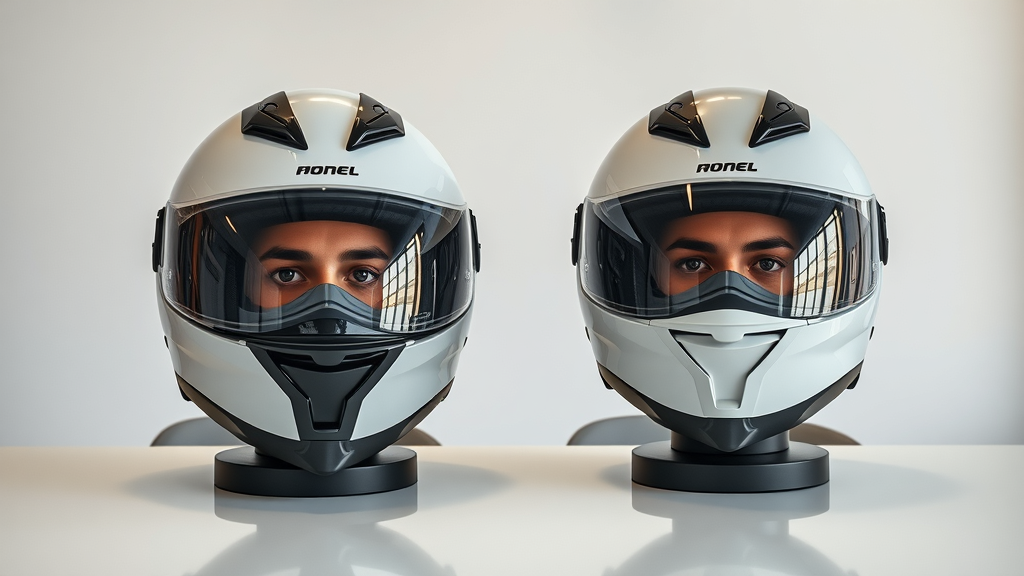
Picking the Right Motorcycle Helmet for Comfort and Safety
-
Tips for selecting motorcycle helmets: fit, ventilation, weight, and proper care for longevity.
Picking the right motorcycle helmet starts with fit—your helmet should feel snug all around, without uncomfortable pressure points. A poorly-fitting helmet offers much less protection, so always try on several models and check for movement by shaking your head gently. Proper ventilation is also crucial for keeping you cool and limiting visor fog, especially on long rides or in warm weather.
Helmet weight also matters for comfort; lighter materials reduce neck fatigue, making them suitable for daily use. And don’t overlook maintenance—a motorcycle helmet should be replaced after any significant impact and every five years, regardless of how it looks. Clean your helmet pads regularly, and store the helmet in a cool, dry place to preserve its protective materials.
"A quality motorcycle helmet is your first—and sometimes only—line of defense in a crash." — Motorcycle Safety Foundation
Visual Guide: How to Properly Fit a Motorcycle Helmet
Motorcycle Jackets: Combining Style with Tough Protection
Leather vs. Textile Motorcycle Jackets: Which Offers Better Safety?
-
Explore how modern motorcycle jackets offer abrasion resistance, armor, and ventilation. Differences between riding jacket materials.
The motorcycle jacket isn’t just a fashion statement—it’s crucial protective gear that shields your upper body from impact and abrasion. Leather jackets have set the standard for years with their outstanding abrasion resistance, but today’s textile motorcycle jackets bring advanced materials for waterproofing, ventilation, and even lighter weight. Both types offer integrated CE-rated armor for shoulders, elbows, and spines, enhancing injury prevention in case of a slide.
Textile riding jackets often have better weather versatility, with built-in liners and vents for year-round comfort. Leather, meanwhile, remains unmatched for pure toughness and feel. The key is to select a motorcycle jacket that suits your climate and the kind of riding you do, ensuring optimal protection without sacrificing comfort or style.
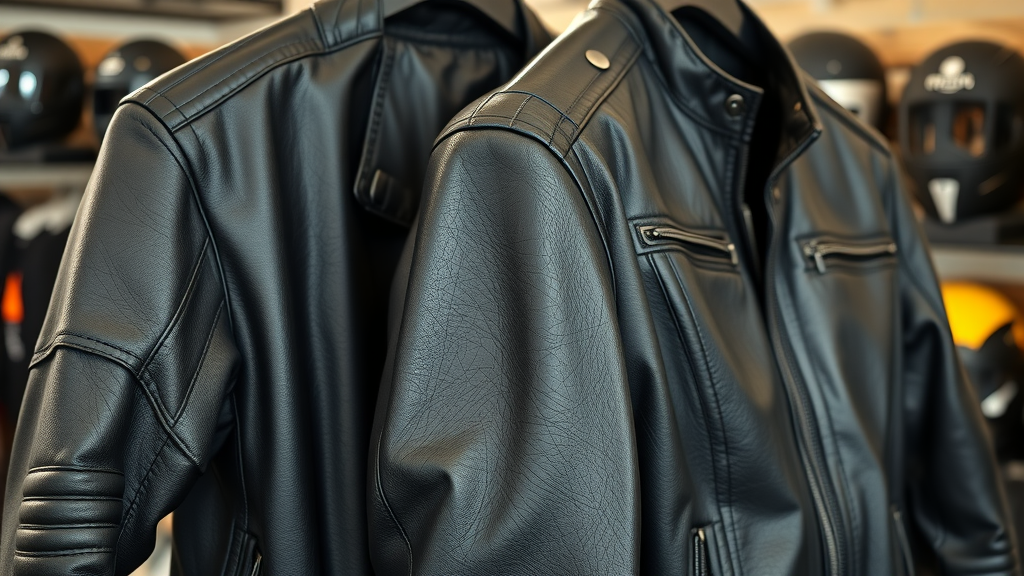
Critical Features Every Motorcycle Jacket Must Have
-
Discuss must-have features: CE-rated armor, reflective panels, adjustable fit, and weather versatility for riding gear.
Regardless of material, the ideal motorcycle jacket includes CE-rated armor inserts at the elbows, shoulders, and preferably a back protector, which provides vital impact protection. Look for abrasion-resistant fabrics or leather paired with strong stitching and secure zippers. Reflective panels increase your visibility during night rides and poor weather conditions, helping other drivers see you sooner.
An adjustable fit ensures your protective gear stays securely in place, and weather versatility—such as removable liners or waterproof membranes—makes your jacket adaptable to changes in temperature or rain. The best jackets allow airflow via zippered vents and room for layering, so you’re comfortable riding any time of year. By focusing on these features, you’ll choose a riding jacket with the right blend of style, function, and unbeatable safety.
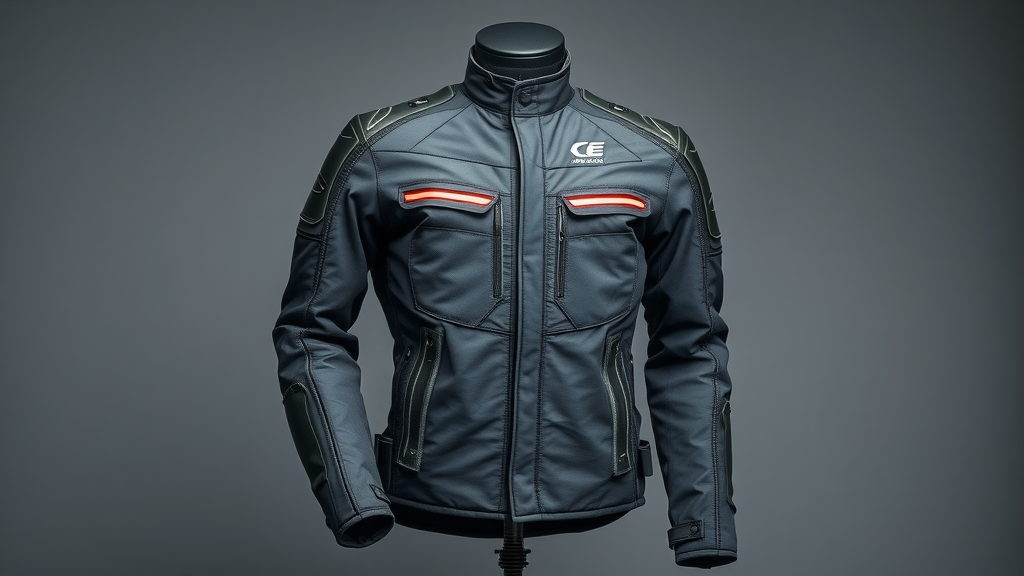
Visual Comparison: Top 5 Motorcycle Jackets Tested for Protection
Motorcycle Pants and Riding Jeans: Lower Body Motorcycle Gear Essentials
Choosing Motorcycle Pants and Riding Jeans for Ultimate Protection
-
How motorcycle pants and riding jeans prevent serious injuries, features like Kevlar lining and knee/hip armor.
While many riders focus on jackets and helmets, lower body protection is just as crucial when it comes to motorcycle gear essentials. Motorcycle pants and riding jeans use Kevlar or other abrasion-resistant materials to defend against road rash, one of the most common motorcycle accident injuries. Dedicated riding pants also include CE-rated armor for the knees and hips, delivering impact protection where you’re most vulnerable during a slide or fall.
Motorcycle pants and specially-designed riding jeans strike a balance between protection and casual style. Some feature reinforced seams, stretch panels for flexibility, and moisture-wicking liners for comfort on long rides. If you want maximum coverage, always pair your motorcycle pants or riding jeans with other protective gear to achieve full-body protection and peace of mind.
Comparison: Standard Riding Jeans vs. Dedicated Motorcycle Pants
|
|
|
Motorcycle Pants vs. Riding Jeans |
|
Feature |
Riding Jeans |
Motorcycle Pants |
|---|---|---|
|
Protection Level |
Kevlar panels, basic armor |
Full coverage, CE-certified armor |
|
Comfort |
Casual fit, daily wear flexibility |
Tailored for riding, may feel snug off-bike |
|
Cost |
Moderate |
Higher |
|
Style |
Looks like regular jeans |
Technical, riding-specific design |
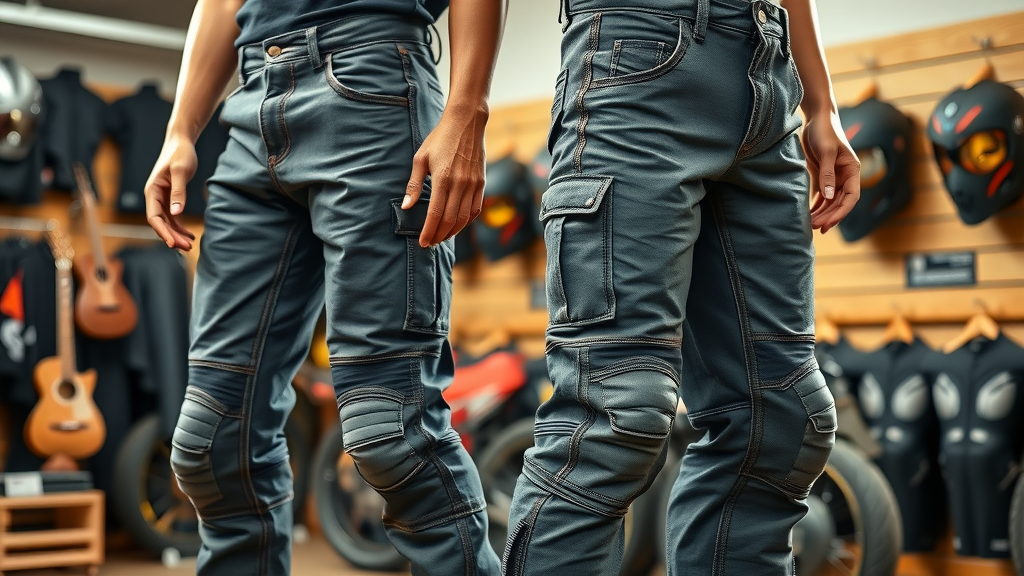
Motorcycle Boots: Safeguarding Your Feet and Ankles
Essential Qualities in Motorcycle Boots
-
Highlight ankle support, non-slip soles, shifter pads, water resistance, and scenarios where motorcycle boot design matters.
Motorcycle boots are more than footwear—they’re purpose-built protective gear designed to protect your feet, ankles, and lower legs from injury. They provide solid ankle support, reinforced toe boxes, shifter pads for gear changes, and non-slip soles critical for staying upright on slick or uneven surfaces. Water resistance is also key, keeping your feet dry and comfortable during unpredictable rides.
Choosing a motorcycle boot that fits your riding style is paramount. For example, racers may prefer technical boots with maximum support and rigid armor, while tourers might favor a waterproof, all-day-comfort option. Whatever your preference, never substitute regular shoes for motorcycle boots—proper footwear is vital in preventing breaks, crush injuries, and minimizing fatigue during longer journeys.
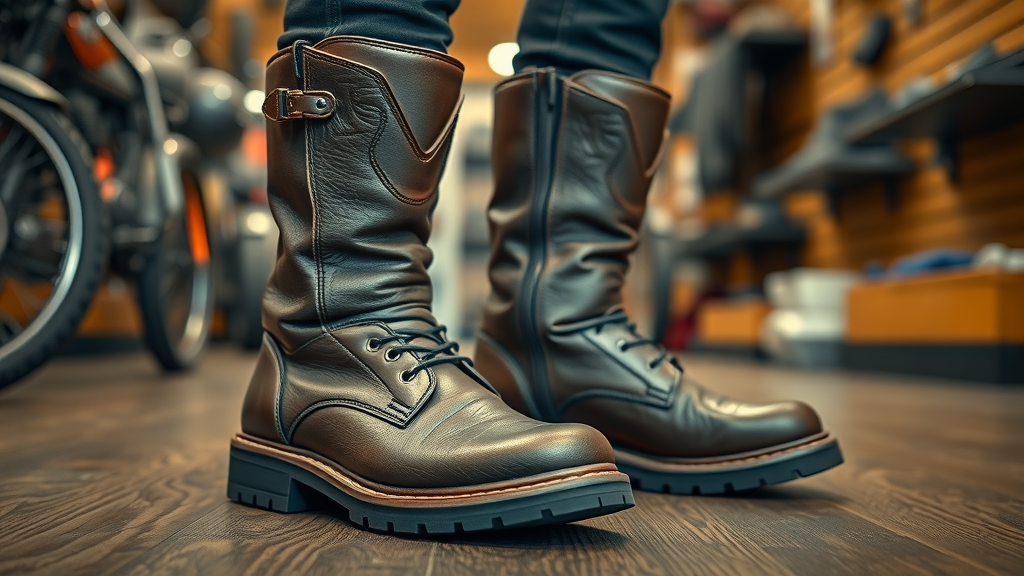
Motorcycle Boot and Casual Footwear: A Risky Trade-Off
-
Risks of riding without proper motorcycle boots and how to select boots that fit your riding style.
Riding in sneakers or everyday shoes is a significant safety compromise. In a motorcycle accident, these offer little to no protection against twisting, crushing, or sliding injuries that can result in long-term complications or even amputation. Motorcycle boots, on the other hand, are engineered for abrasion resistance and support under high impact conditions—qualities casual footwear simply doesn’t possess.
To select the right motorcycle boot, measure for a snug, supportive fit that allows freedom of movement but resists slipping off. Look for build quality including thick leather, stitched rather than glued soles, and extra armor over high-risk areas. Matching the level of protection to your typical riding—be it commuting, track days, or touring—ensures your boots keep you as safe as possible while complementing your other riding gear.
Motorcycle Gloves: A Small Investment, Significant Protection
Why Your Hands Need Specialized Motorcycle Gloves
-
Explain the role of gloves: abrasion resistance, knuckle protection, and enhanced grip. What to look for when picking motorcycle gloves.
Motorcycle gloves may be a small part of your ensemble, but their role in protecting your hands can’t be overstated. Specialized gloves offer critical abrasion resistance and armored knuckle protection, reducing the risk of hand fractures and cuts during slides. They’re designed for excellent grip, ensuring you have precise throttle and brake control in all weather—vital for safe riding.
A good pair of motorcycle gloves fits snugly, provides palm padding, and doesn’t restrict finger movement. Look for features like double stitching, touchscreen compatibility, and ventilation for warm rides. Gloves with waterproof membranes are ideal for rainy conditions, ensuring your hands stay comfortable and fully functional from the start to end of any journey.
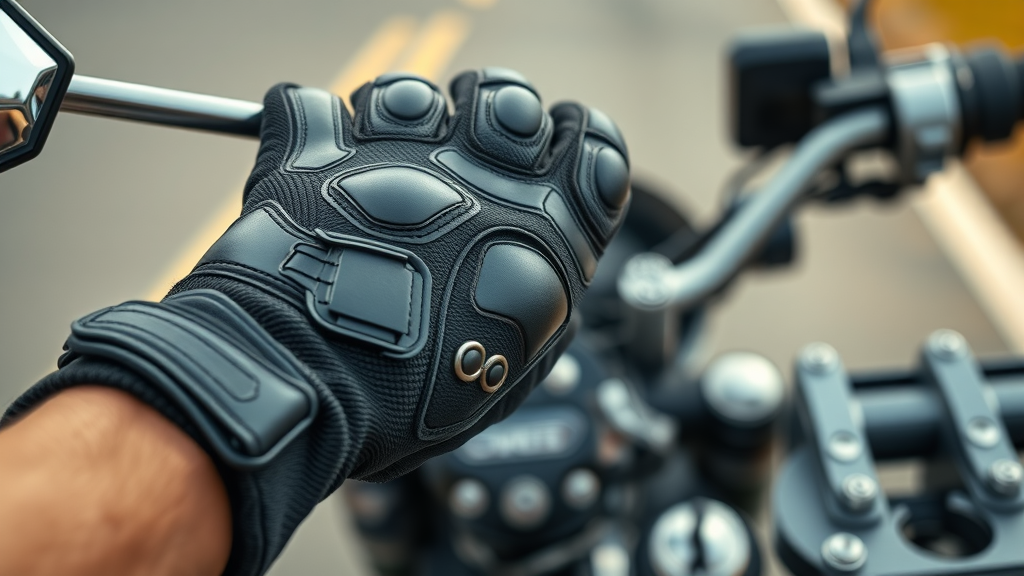
All-Weather Motorcycle Gloves for Year-Round Riding
-
Compare materials and features for warm vs. cold weather, including waterproofing without sacrificing tactile feedback.
The best motorcycle gloves adapt to the seasons. Summer gloves use lightweight, breathable materials with perforations for airflow, while winter gloves prioritize insulation and full waterproof barriers. Modern designs often integrate both protective armor and thin waterproof membranes—so your control and tactile feedback never suffer, even in heavy rain or bitter cold.
When shopping for year-round gloves, consider removable liners for easy washing, and select materials that won’t become overly stiff in the cold. Prioritize options that don’t sacrifice safety certification for comfort or weather protection, ensuring your hands are always ready for any conditions you face on the road.
Tool Kit: An Overlooked Motorcycle Gear Essential
-
Why every motorcycle rider needs a basic tool kit: roadside emergencies, minor repairs, and extending gear lifespan.
The humble tool kit is perhaps the most overlooked motorcycle gear essential, yet it can mean the difference between a minor inconvenience and a major roadside emergency. Carrying a basic set of tools allows any motorcycle rider to address tire punctures, loosened bolts, or simple chain adjustments, extending both trip safety and the lifespan of your gear.
A well-selected tool kit fits under your seat or in your tail bag, and includes the essentials for your specific bike model. Investing a bit of time to assemble the key tools not only increases your self-sufficiency but also keeps you from being stranded far from help—giving you peace of mind to tackle any journey with confidence.
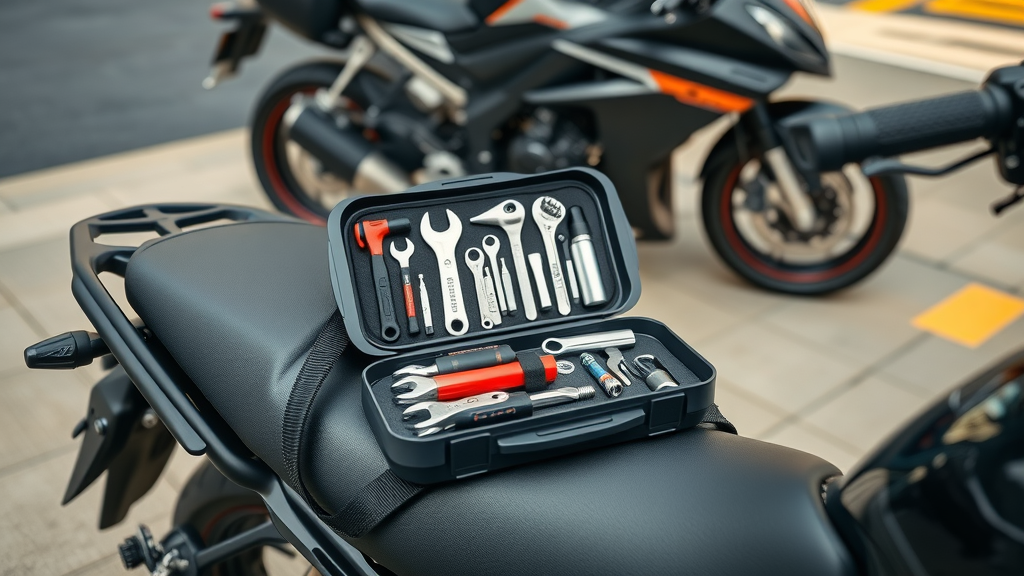
10 Essential Tools Every Rider Should Carry
-
Multi-tool with pliers and screwdrivers
-
Compact tire repair kit
-
Mini air compressor or CO2 inflator
-
Allen wrenches (fit your bike's common bolts)
-
Combination wrench set (metric/imperial as needed)
-
Electrical tape and cable ties
-
Spare fuses and bulbs
-
Chain lube and small brush
-
Pressure gauge
-
Gloves for quick roadside repairs
Selecting Motorcycle Gear: Key Factors to Consider
-
Fit, certification marks, seasonal needs, layering, and matching gear to your riding style and environment. Avoiding common pitfalls in selecting protective gear.
Picking the right motorcycle gear essentials means more than just buying the most expensive products. Start with fit—ill-fitting gear can slip out of place and leave you vulnerable. Always look for certification marks like DOT, ECE, or CE, verifying the product meets rigorous safety standards. Thinking seasonally is smart: opt for vented or removable liners for hot summers and layered gear for cold winters. Match your purchases to your riding style and the environment—what works on city streets might differ from off-road adventures.
Common mistakes include prioritizing appearance over protection or skipping critical features like adjustable closures and reflective accents. Well-chosen motorcycle gear, tailored to your unique riding profile, ensures you're ready for anything—from cross-country trips to weekend blasts, rain or shine.
Quote on Motorcycle Gear Essentials
"The best gear is the one you hope never gets put to the ultimate test—but the one you’re grateful for when it does." — Veteran Motorcycle Rider
Mistakes to Avoid When Assembling Your Motorcycle Gear Essentials
-
Ignoring fit and comfort
-
Skipping certified protective features
-
Prioritizing style over safety
-
Overlooking weather adaptability
-
Neglecting regular gear maintenance
Avoiding common pitfalls is key to assembling truly reliable motorcycle gear essentials. Poorly-fitted jackets or helmets can compromise safety standards, so always prioritize comfort and certification over appearance. Don’t let style dictate your choices at the expense of vital features like weather resistance or armor placement. And most importantly, keep your gear in top shape; regular cleaning, checking for wear, and prompt replacement after any significant impact are all essential for maximizing your personal safety whenever you ride.
People Also Ask: Answers to the Most Searched Motorcycle Gear Questions
What are the essential motorcycle gears?
-
A full set includes a certified motorcycle helmet, jacket with armor, protective pants or riding jeans, motorcycle gloves, dedicated motorcycle boots, and a tool kit for emergencies.
The must-have motorcycle gear essentials consist of: a certified helmet for head protection, a motorcycle jacket with built-in armor for upper body safety, riding jeans or pants with reinforcement and impact pads, motorcycle gloves for hand safety and grip, motorcycle boots for foot and ankle protection, and a tool kit for roadside emergencies.
What is the 12 second rule on a motorcycle?
-
The 12 second rule means scanning at least 12 seconds ahead of where you are riding to anticipate danger and prepare for safe reactions.
The "12 second rule" empowers motorcycle riders to anticipate hazards and react safely; it means continually checking at least 12 seconds ahead at your current speed. This proactive scanning helps you spot obstacles, vehicle changes, or road hazards before they become immediate threats, allowing for smooth, safe riding and more time to make controlled decisions.
What is all the gear you need for a motorcycle?
-
Helmet, jacket, riding jeans or pants, gloves, boots, and emergency tool kit are the basic motorcycle gear essentials for every rider.
Every rider’s list of motorcycle gear essentials should include: a well-fitted, certified motorcycle helmet, a protective riding jacket, reinforced riding pants or jeans, gloves tailored for grip and safety, reliable motorcycle boots, and a compact tool kit. This ensemble ensures comprehensive protection from head to toe—no matter your journey.
What gear should you be in on a motorcycle?
-
Gear selection depends on speed, traffic, and terrain; focus on maintaining correct RPM so your motorcycle responds well and stays under control.
The right gear on your motorcycle doesn’t just refer to your clothing—it also means selecting the correct transmission gear based on speed, traffic, and road conditions. Staying in the proper gear keeps your bike in its power range, giving you immediate acceleration for safe maneuvers and maintaining overall control on any terrain.
Quick Tips: How to Gear Up Effectively for Every Motorcycle Ride
Frequently Asked Questions About Motorcycle Gear Essentials
-
Summarize common concerns: cleaning, gear lifespan, replacing helmets post-impact, layering for comfort, traveling with spare protective gear.
Many riders wonder how often they should clean and replace their motorcycle gear. Helmets should be replaced after any impact or every five years, while jackets, gloves, and pants should be checked for worn armor and damaged seams regularly. Layering helps adapt your motorcycle riding gear to different climates without sacrificing protection, and it’s smart to bring spare gloves or rain shells on longer trips. Always inspect your tool kit before big rides, and never hesitate to upgrade your gear if it’s no longer certified for safety.
When traveling, choose a pair of gloves or lightweight jacket as backup—packing these spares ensures you’re prepared for sudden weather changes. Proper care and regular inspection of your motorcycle gear essentials aren't just about maintaining appearances; they’re vital steps that keep your protective gear effective ride after ride.
Recap of Motorcycle Gear Essentials: Stay Protected on Every Ride
-
Prioritize protective gear before every journey, update your motorcycle gear essentials regularly to suit your evolving riding needs, and always remember—your best ride begins with the right protection.
Start every ride with the right motorcycle gear essentials, update as your needs change, and always put safety first—so every journey ends as well as it begins.
To enhance your understanding of essential motorcycle gear, consider exploring the following resources:
-
“Essential Motorcycle Gear for Beginners” : This guide offers a comprehensive overview of the fundamental gear every new rider should invest in, including helmets, jackets, gloves, boots, and pants, along with recommendations for each category. ( insurance.boundlessrider.com )
-
“Motorcycle Gear Guide from A to Z - What to Wear and When” : This resource provides detailed insights into selecting appropriate motorcycle gear for various riding conditions, emphasizing the importance of proper fit, material choices, and safety certifications. ( insurance.harley-davidson.com )
By delving into these articles, you’ll gain valuable knowledge to make informed decisions about your riding gear, ensuring both safety and comfort on the road.
 Add Row
Add Row  Add
Add 
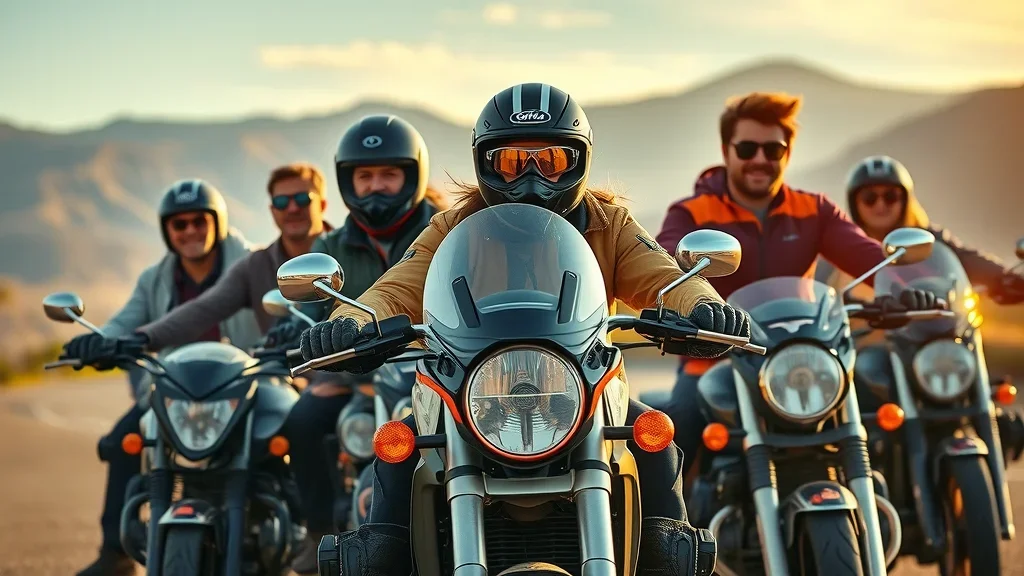
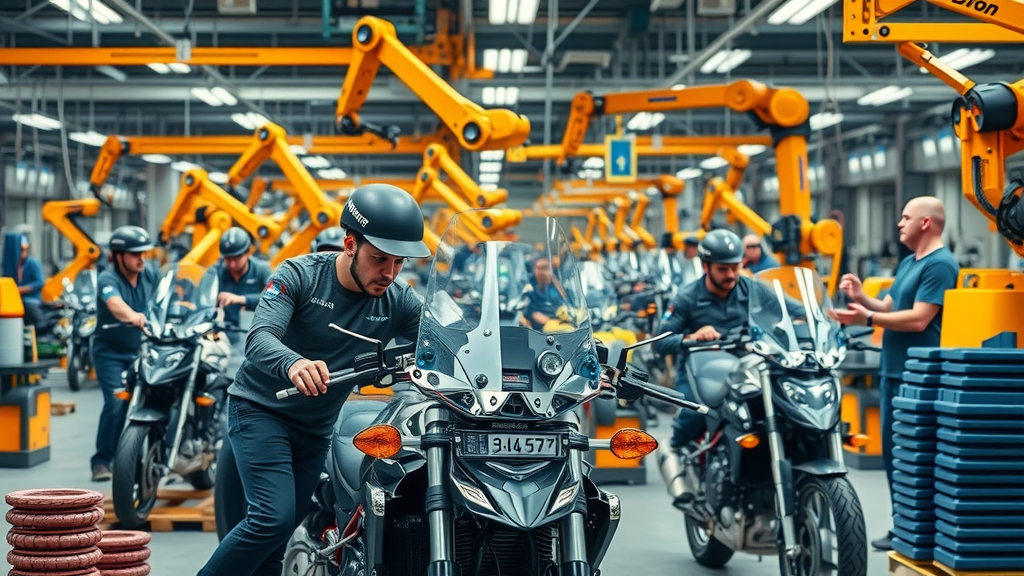
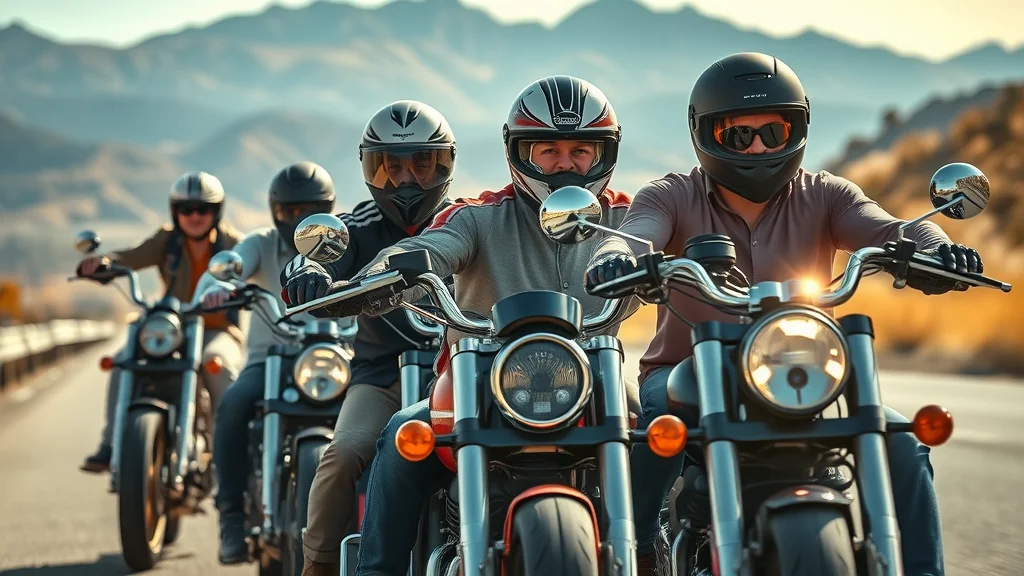
Write A Comment